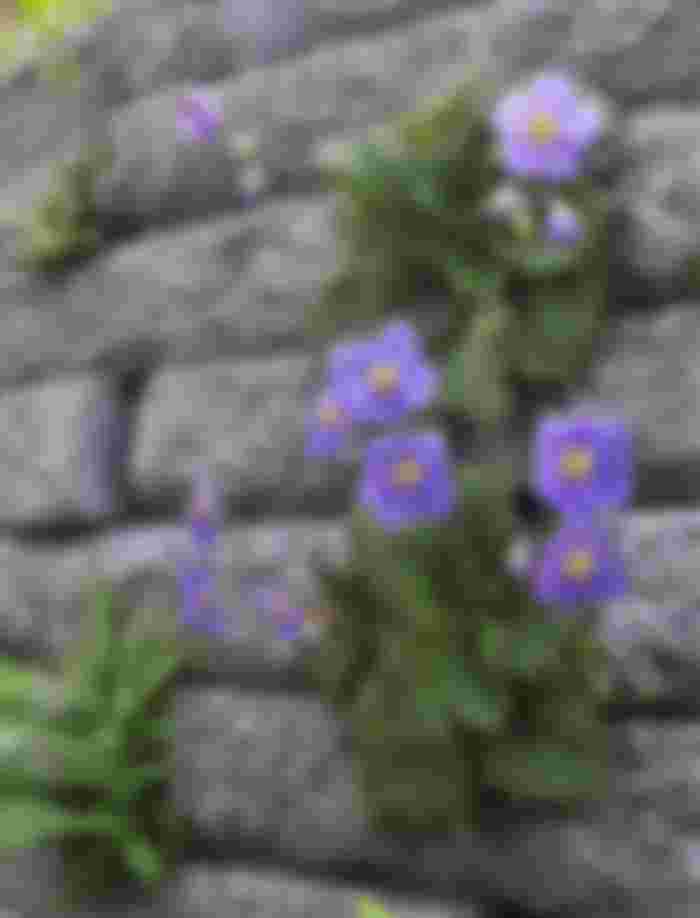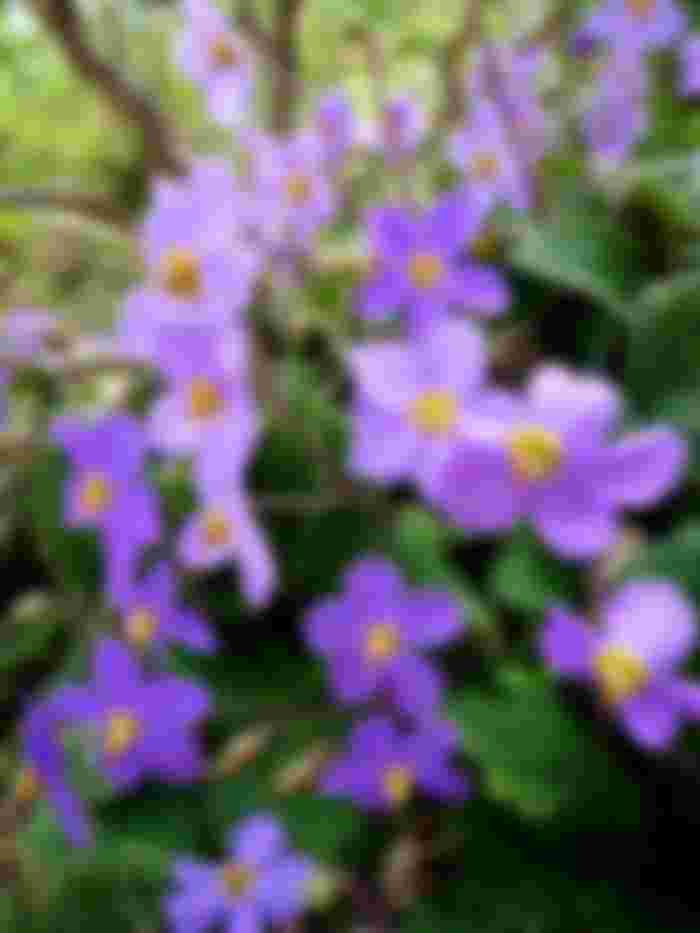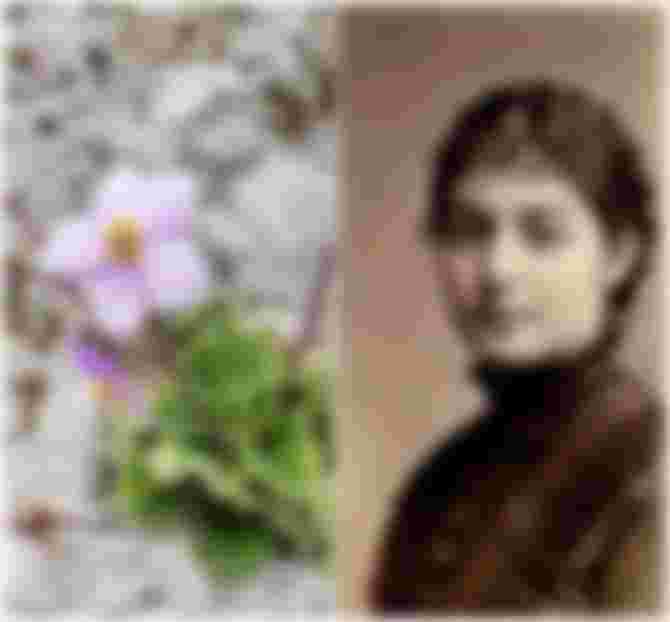Ramonda serbica, also known as Serbian ramonda and Serbian phoenix flower, is a species in the family Gesneriaceae. It is one of the few European representatives of this family, found in Albania, Bulgaria, Greece, North Macedonia and Serbia. The flower was discovered by Serbian botanist Josif Pančić in 1874 near Niš. It is known for its ability to be revived when watered, even when fully dehydrated, also known as a Desiccation plant. In Serbia it is used as a symbol of Armistice Day in World War 1.

NATALIJA'S RAMONDA LIVES ONLY IN THE CENTRAL BALKANS
It is an endangered and rare species that lives only in the Central Balkans, in Serbia, Macedonia and northern Greece. And Natalija Ramonda is also called the "phoenix flower" because of its miraculous property of being resurrected after it is completely dried - it is enough to just water it.

Biologists say that Natalija's ramonda dates back to the Ice Age, and ramonda has been known to the world since the 19th century, when a French researcher named after them discovered it in the area of today's Spain, in the Pyrenees.
However, in 1874, Josif Pančić made a significant discovery when he discovered that ramonds also existed outside Spain. He discovered them on the territory of southern Serbia, but concluded that it was a new species that he named Ramonda serbika (Ramonda serbica).

JELAŠNICA GORGE HIDES PHOENIX PLANTS
Ramonda Serbica and Ramonda Natalija are considered real gems by botanists because they represent the remains of flora that survived the ice age and then retreated to hidden parts of the Balkan Peninsula.
Nature lovers who want to see Ramonda Natalija and Ramonda Serbica in bloom can do so in the Jelasnica gorge near Nis, which is one of the few places in the Balkans where these flowers thrive.
The canyon on the left and right banks of the Nisava is 17 kilometers long, and was first protected in 1977, while the nature park became 18 years ago, precisely because of these plants and many endemic, relict and rare plant and animal species, but also geomorphological forms. and a cave.
Ramonda is considered a real gem by botanists because it represents the remains of flora that survived the ice age and then retreated to hidden parts of the Balkan Peninsula.
Natalija ramonda is a perennial evergreen plant. It grows at altitudes from 350 to 2200 m in inaccessible places, gorges, limestone rocks where it is dry and cold.
The leaves of the plant are dark green and dense, elliptically ovate and collected in a rosette. It blooms from April to June, and the flower stalk emerges from the middle of the rosette and is about 10 cm high.
The flowers have 4, and rarely 5 or 6 folded coronal leaves that are purple and sometimes white. As a natural rarity in Serbia, it is protected by law. This plant is not medicinal. It is especially interesting that it belongs to the ancient, fossil species.
It is a remnant of subtropical flora, probably from Africa that survived the ice age and then retreated to hidden parts of the Balkans.
In addition to being ancient, it is extremely durable, it has a property that among 300,000 known plants and flowering plants has only 30 plant species. After it dries completely in the absence of water, this plant can come to life again after a little rain and watering. This property is called anabiosis and is particularly interesting in the era of space exploration
That is why it is also called the Fenih plant. It has this property as a relict, subtropical plant that lived in ancient epochs and a different climate from today.

Ramonda serbika and her "cousin", Ramonda Natalija, biologists say, are unique in that they have survived for millions of years, despite various climatic and other changes. They thrive in the tropics, and here they are due to a kind of Mediterranean climate, created by the geomorphological environment, hydrological processes, gradually cut stone limestone cliffs, but also the so-called wind rose circulating in this part of Serbia. They sprout and survive in limestone cracks on the north side of the rocks. It also enables the life of wild lavender, sage, wild cherry, bear hazel, which is characteristic of the Mediterranean and the Mediterranean.
Ten years later, after Josif Pančić discovered the type of Ramonda serbica, ie in 1884, the court doctor Sava Petrović discovered that there was another type of Ramonda in the Balkans with a slightly different crown and leaves. Since he was in the service at the court of the King of Milan, Petrović gives this species the name Ramonda nathaliae, in honor of Queen Natalija.

Armistice Day in the First World War, which Serbia marks as a national holiday 11.11. in memory of the victory and great suffering of the Serbian army in the Great War.
The holiday, as we know, is dedicated to the signing of the armistice in the First World War, when on November 11, 1918, the generals of the two warring parties in the French city of Compiègne signed an armistice in a railway car. Although the conflict was officially ended only with the conference in Versailles, this event on the railway track in practice ended the Great War, the bloodiest conflict in human history so far.
The Republic of Serbia has chosen this date as one of its holidays, and it has been arranged that a specific emblem be worn on the lapel in the week before the Day of Reconciliation:

The emblem consists of two green ribbons that are associated with the ribbon of the famous Albanian monument and one purple flower with five petals. The flower in question is Natalija ramonda (Ramonda nathaliae).






I love flowers... Thanks for writing & sharing ...